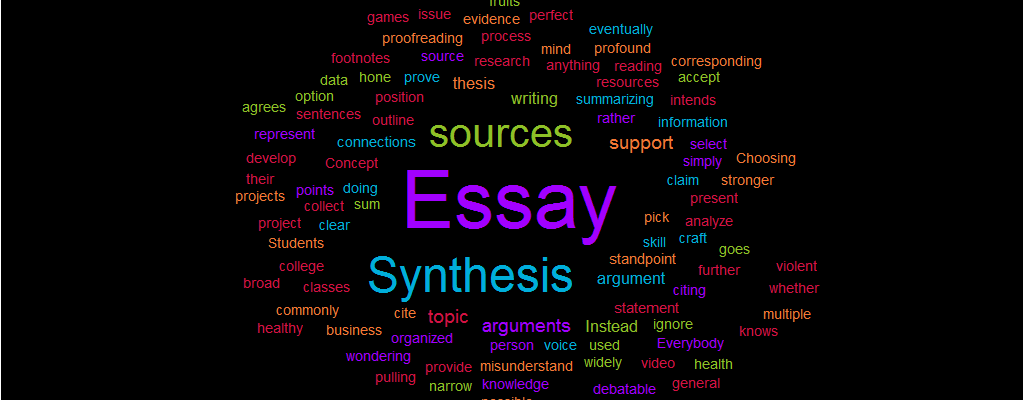How to Write a Synthesis Essay
Publication Date:

To craft a synthesis essay, you should be able to collect, analyze, and sum up the data and represent it in an organized way. Students develop this skill in their college classes, but it is further commonly used in the business world, too. So it is better to hone this skill now rather than wondering, “Who will write my essay?”
Concept of Synthesis Essay
A synthesis essay must provide profound connections between several parts of one project, or a number of projects, and eventually present and support a claim about the topic.
Do not misunderstand the concept of writing a synthesis essay as simply summarizing the sources. Rather than doing so, make your point and support it with evidence from all these resources. If there is anything that goes against your standpoint, do not ignore it. Instead, accept it, and prove that your argument is stronger.
Choosing the Topic
If you have an option to select the topic, then pick up something that is broad enough for pulling a number of corresponding sources together, but narrow enough to make it not possible to connect widely disparate resources.
A perfect topic for such a paper should encourage you to select a position on a debatable issue. Also, it should not be something that is general knowledge, like if fruits are good for your health. Everybody knows and agrees that they are healthy, and multiple sources support this claim. Instead, pick up something like whether violent video games contribute to real-life violence.
Writing Steps
- Conduct research. Read every source attentively. Look for common information among them, and make connections in your mind or by making notes throughout the process of research.
- Choose your standpoint. Stick with it as you write. The secret is that you do not have actually to believe this position — you should be able to prove your argument persuasively.
- Craft a thesis statement. As soon as you have picked the standpoint, express it in your thesis statement. It has to briefly describe the topic and clearly present your opinion on the subject. It can be either placed at the beginning of the paper or be the last sentence of the introducing.
- Write an outline. Now you have to think about how to organize and support your argument. As you compose the outline, write the thesis statement at the top. After it, jot down all the sub-arguments. Under each of them, list the supporting points.
- Use the sources wisely. Do not simply sum up the sources. Instead, analyze them. While devoting one passage to one source may seem to be the most logical way, by doing so, you risk summarizing instead of creating connections between the sources. Structurethe paragraphs around the arguments. Use two or three sources per paragraph to support your arguments.
- Move to the writing process. Now, you should just fill in the information and make it sound good. The most complicated work is now behind you. As you write, keep the thesis in mind, therefore having a clear sense of direction. Write in the third person. Meaning, you should use “he,” “she,” “it,” and create clear and complete sentences. Use the active voice. It is acceptable to use the passive voice only in cases when you would otherwise use first (“I”) or second person (“you”).
- Finalize your essay. This intends revising, proofreading, and citing the sources.
When you revise your paper, you should work on strengthening arguments and improving transitions between points and sections. You aim to make the argument maximally brief and easy to follow. The best way to do this is by reading an essay out loud, as it helps to notice awkward sentences or incoherent arguments. Also, a good idea is to ask somebody to proofread your article. Or, you can buy essay from a custom writing company and be sure it is written perfectly.
Proofreading intends attentive reading and correcting any spelling, grammar, or punctuation mistakes. Check if all the names and proper nouns are spelled correctly.
Typically, citing the sources means using footnotes to cite sources in the body of the paper, and a bibliography at its end. Use footnotes and in-text citations every time you quote, paraphrase, or cite anything.